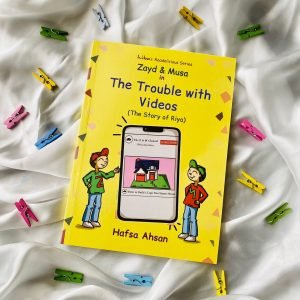Top Facts That Your Child Needs to Know about Pakistan’s Freedom Movement
By Sumaira Dada
Surprisingly, the struggle for an independent Muslim nation started out as a struggle for a united Indian nation where Hindus, Muslims and other communities would coexist peacefully. The War of Independence in 1857 was a joint struggle of Hindus and Muslims against British imperialists who, till this day, continue to refer to it as a Mutiny. It took another century and a policy of Divide and Rule to foster hatred between the Hindus and Muslims and thereby give rise to the idea of a separate nation for Muslims.
Whilst many of us may have gone through the facts of Pakistan movement merely as a preparation for examinations, it would be worthwhile to reassess history in order to truly appreciate, understand, and value independence. Following are the top five facts that every child needs to know about the Pakistan movement:
- Quaid-e-Azam, at first, championed Hindu-Muslim unity
Quaid-e-Azam Mohammad Ali Jinnah tried very hard to bring Hindus and Muslims together. Hindu-Muslim unity had become a myth encouraged by the British policy of Divide and Rule. Jinnah drafted the Lucknow Pact in 1916, the main feature of which was the grant of separate electorates for Muslims. At first, the Congress party, which was mainly dominated by Hindus, approved the Lucknow Pact. However, later, they outrightly rejected it and approved a report drafted by a Commission headed by Motilal Nehru (yes, Jawaharlal Nehru’s father). The constitutional package, famously known as the Nehru Report, denied separate electorates to Muslims. In spite of Jinnah’s impassionate plea for separate electorates and fair representation for the Muslim minority, his words fell on deaf ears and the report was adopted.
Jinnah’s friend Jamshed Nusserwanjee recounts that Jinnah had tears in his eyes as he stood in front of his first class coupe compartment at the Calcutta railway station and took his hand. “Jamshed, this is the parting of the ways,” he said. His words were prophetic as the chasm between the communities widened and deepened.
- The Lahore Resolution did not even mention the name, Pakistan
Although, the name, Pakstan (without an ‘i’) was coined in 1933 by Choudhary Rahmat Ali, the Lahore Resolution of 1940, nicknamed by the press as the Pakistan Resolution, did not even mention the word Pakistan as a separate state in the text of the resolution. The details of Pakistan were not spelt out, neither was the future constitutional relationship with the Imperial power touched upon. The passage of the Lahore Resolution was, in fact, a bargaining counter as the idea of a separate Muslim homeland would be unacceptable to both the British and the Congress party. Thereby, they would likely yield to Muslim demands for greater representation. However, events took a different turn altogether and the idea of a separate Muslim nation caught on.
- The defeat of the Muslim League in the 1937 elections
Paradoxically, it was the crushing defeat of the Muslim League in the 1937 elections that led it to become a revitalized party. Mohammad Ali Jinnah set out to reorganize the League and make it a popular party. In fact, it was in the 1937 meeting of the League in Lucknow that Jinnah was conferred for the first time the title of “Quaid-e-Azam” (Great Leader). The anti-Muslim attitude of the Congress Party and the socialist agenda of Nehru’s Congress that threatened Muslim landlords increased the League’s popularity among the Muslims. The concept of Pakistan spread among the masses.
Quaid-e-Azam’s efforts bore fruit and the Muslim League won the elections held in 1945 and 1946. Muslim League at last truly spoke for all the Muslims in India.
- The Cabinet Mission Plan of 1946
The Cabinet Mission Plan refers to the plan chalked out by the British to transfer power to the Indian leaders. The British had stated that the Plan was non-negotiable and the party that accepted the Plan would be asked to form the interim government.
The events following the approval of the Cabinet Mission Plan by the Muslim League proved the biased attitude of the British towards the Muslims. Following the Congress Party’s refusal to accept the plan, Muslim League’s acceptance of the Plan and failure of the talks between Jinnah and Nehru, the British altered their stance. In order to woo the Congress, they transformed the non-negotiable Plan into a negotiable document. The League felt betrayed. Unlike the Congress, it had never resorted to agitation as a political tool. However, as a result of the biased attitude of the British the League called for Direct Action for the achievement of Pakistan.
- The Radcliffe Award, 1947
The Radcliffe Award refers to the Partition Plan drawn up by Radcliffe, Chairman of the Boundary Commissions. Mountbatten, the Viceroy at that time, tampered with the plan and Radcliffe, the architect of the Plan, left India in protest.
The Award was unfair in many ways: Muslim majority areas were handed over to India and Punjab and Bengal were partitioned against the advice of their governors. Some even consider Lord Mountbatten as the architect of the Kashmir problem, unresolved till today.
Every Pakistani child needs to remember the above facts in order to value independence. Pakistan’s independence, after all, was far from easy. A historian, Lawrence Ziring writes that Pakistan had virtually nothing from which to construct a government…The government was even limited in pencils and writing paper. The Indian Reserve Bank was supposed to pay Rs. 750 million to Pakistan in 1947. Out of this Rs. 550 million have still not been released and to this day and shows up as a receivable in the Balance Sheet of the State Bank of Pakistan.
Image by Denis Doukhan from Pixabay



